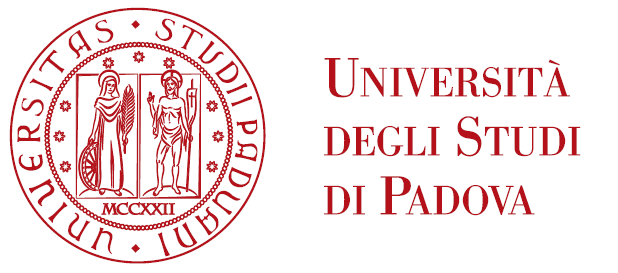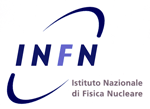
IN:Theory - Interdisciplinary Applications of Nuclear Theory: from atoms and molecules to stars
P.R.A.T. - Progetti di Ricerca di Ateneo (bando 2015) - Univ. Padova
The exploratory project aims at starting a new research line on applications of algebraic models of nuclear theory to the ab initio exact solution of many-body problem with the aim to apply it to atomic physics first and to the nuclear problem later on. We have in mind a precise mathematical framework that can be easily implemented in computer codes and tested against well-known 'atomic' bechmarks. When this is achieved it can be used to explore new systems in the nuclear domain and new phenomena (drip-lines, proton-neutron asimmetry, three-body foces, etc.)
Project Approved: 25/01/2016
Project Running: 01/02/2016- 31/01/2018
Project code: CPDA154713
Post-doc position: Summer 2016- Summer 2018 (tentative dates)
Principal Investigator: L.Fortunato
Other participants: 9 (Ph.d., researchers, professors and visiting researchers)
Total budget: 67kE
# POST-DOC POSITION in Theoretical Nuclear Physics assigned to Dr. Oishi Tomohiro ( 09/2016 - ...) !!
See Position -advertisement <=== The Deadline is now closed.
# TESI di DOTTORATO DISPONIBILI per vincitori di concorso a Padova interessati al progetto.
# Ph.D. THESIS AVAILABLE for winners of public selections according to the rules of Padova University (foreigners can try with dedicated grants, see www.unipd.it).
The project is divided in two lines of action.
Line of Action 1) "consolidation" will focus on strenghtening our ability to make calculations of nuclear structure and reaction properties of interest to the new domains of physics (exotic nuclei, new facilites such as SPES) and of reaction of astrophysical insterest (for example for LUNA).
Published results:
c01- "Electromagnetic selection rules in the triangular alpha-cluster model of 12C", G.Stellin, L.Fortunato and A.Vitturi, J.Phys. G 43, 085104 (2016)
c02- "Electromagnetic selection rules for 12C in a 3alpha cluster model", L.Fortunato, G.Stellin and A.Vitturi, Few-Body Systems (2017) 58: 19
c03 - "Applications of nuclear physics to a wider context: from molecules to stars passing through hypernuclei", L. Fortunato, to be published in J.Phys.Conf.Ser. (2017)
Line of Action 2) "startup" will start a new research line on applications of algebraic models of nuclear theory to the ab initio exact solution of many-body problem with the aim to apply it to atomic physics first and to the nuclear problem later on. We have in mind a precise mathematical framework that can be easily implemented in computer codes and tested against well-known 'atomic' bechmarks. When this is achieved it can be used to explore new systems in the nuclear domain and new phenomena (drip-lines, proton-neutron asimmetry, three-body foces, etc.)
Published results:
s01- "Algebraic theory of endohedrally confined diatomic molecules: application to H2@C60"
L.Fortunato and F.Perez-Bernal, Phys. Rev. A 94, 032508 (2016)
Milestones achieved:
Institutions involved in the project:
UNIPD
 DFA
DFA INFN
INFN CLOUD
CLOUD
Return to the initial page.